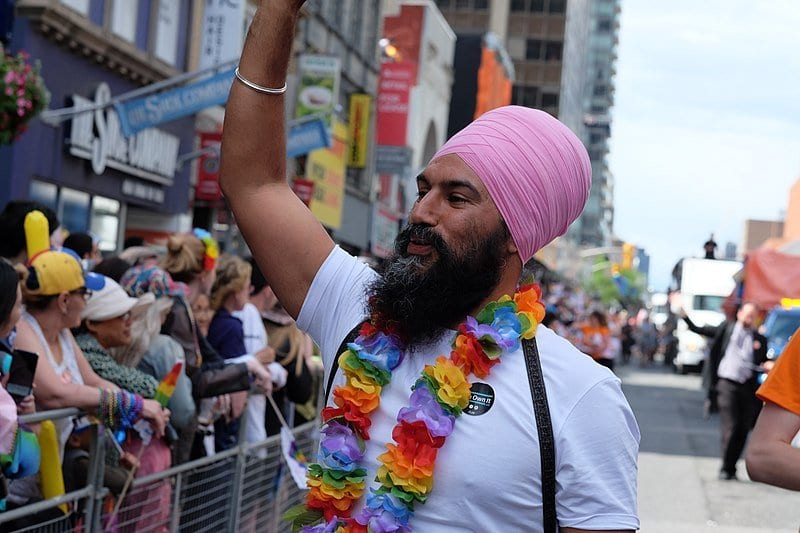It may be one of the most surprising political rises in recent Canadian history, but Jagmeet Singh made it look easy.
By capturing 54 percent of the vote on the first ballot, there’s no doubt who’s in charge of the federal New Democrats.
Despite his smashing victory, suspicions still linger among some party members: that he’s not left-wing enough, that he’s an apologist for sexual and domestic abuse, that he’s willing to sell out LGBT rights.
The latter belief stems from the bad old days of the debate around Ontario’s revised sex education curriculum. In 2015, Singh criticized the government for not doing enough consultation with parents, especially those for whom English isn’t a first language.
Niki Ashton, one of his rivals, tried to hammer him for it.
“That’s the kind of language I expect from conservatives,” Ashton chided during a leadership debate.
Much has been made about how Singh addressed a town hall on the curriculum, which was no doubt informed by the fact that he was switching between English and Punjabi.
Some may have assumed he was saying something nefarious, but people who can understand Punjabi, like myself, heard a man trying to calm down a crowd that was being fed myths from social conservatives.
While fears that Singh isn’t a supporter of queer and trans rights are largely overblown — after all, his voting record on LGBT issues during his tenure at Queen’s Park is unimpeachable — it’s true that he isn’t as fluent in addressing LGBT justice as he is other issues.
But it’s also true that during the campaign, he was one of only two candidates, along with Ashton, to release platform points that relate specifically to LGBT issues.
These included long-time NDP promises like ending the homophobic blood ban and decriminalizing sex work, to more innovative proposals, such as pushing for a federal role in addressing the LGBT youth homelessness crisis.
But Singh simply doesn’t sound as comfortable talking about discrimination against LGBT people as he is talking about racism or workers’ rights.
And publicly praising Fidel Castro, who forced thousands of gay men into concentration camps in the 1960s and then repeated the exercise with HIV-positive people a few decades later, isn’t a great look. (But then again, so did the prime minister).
It will be tough to compete against Trudeau, who can take credit for some legitimate policy accomplishments, especially the passage of a trans-rights bill, which had been an NDP priority for a decade.
So if Singh wants to convert those reluctant queer and trans NDPers into enthusiastic advocates for his leadership, he’ll have to shift his approach.
Much of this can be about focus and emphasis, but he could also champion bold proposals that aren’t currently part of the left’s policy lexicon.
Singh speaks eloquently and forcefully about the humiliation Black and brown people experience when being randomly stopped by the police. He should also speak to Canadians about the feeling of danger a trans sex worker feels when she is harassed by those same officers.
As the first person of colour to lead a major federal party, Singh has the unique opportunity to amplify the voices of Black, Indigenous and non-white LGBT people, who are often pushed to the margins when debates about queer and trans rights arise in politics.
On immigration, Singh’s NDP could promise a ban on deportations of LGBT people to any of the 70-odd countries that criminalize homosexual activity, a practice that is shockingly common under current refugee policy.
And with recent advances in science, Singh could put forward a comprehensive plan to end the HIV epidemic in Canada once and for all.
A greater emphasis on LGBT issues will be doubly important for Singh because he’ll be subjected to the ugly and persistent stereotype that Sikh men are inherently homophobic.
Singh won’t get the same kind of credit that Trudeau did for marching in Pride parades. He should instead try to re-establish the NDP as the institutional vanguard of the LGBT movement, both in tone and in practice.

 Why you can trust Xtra
Why you can trust Xtra


